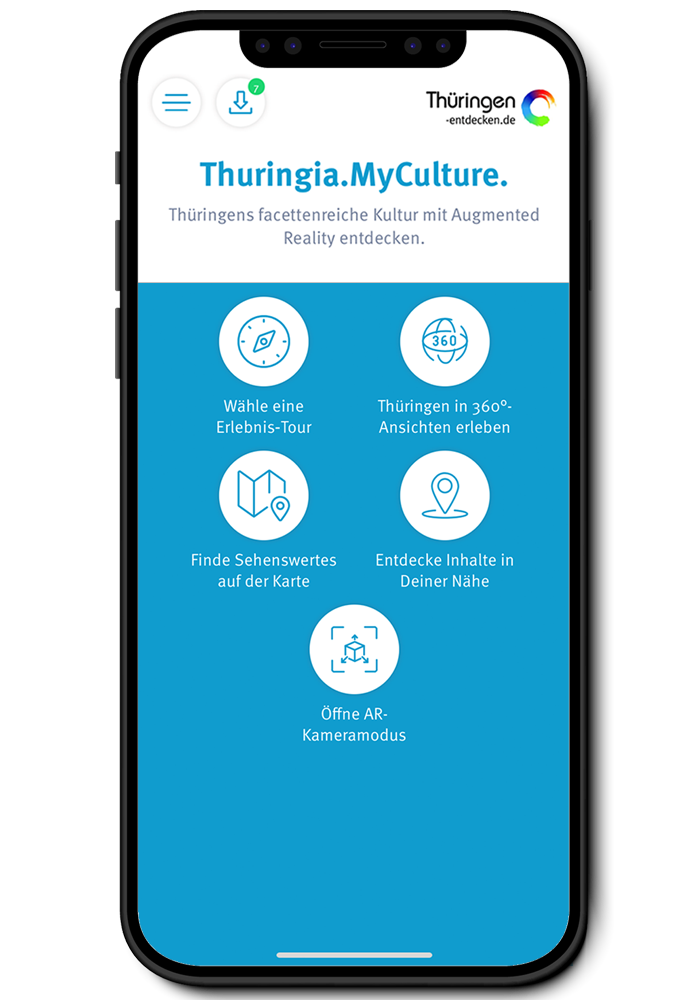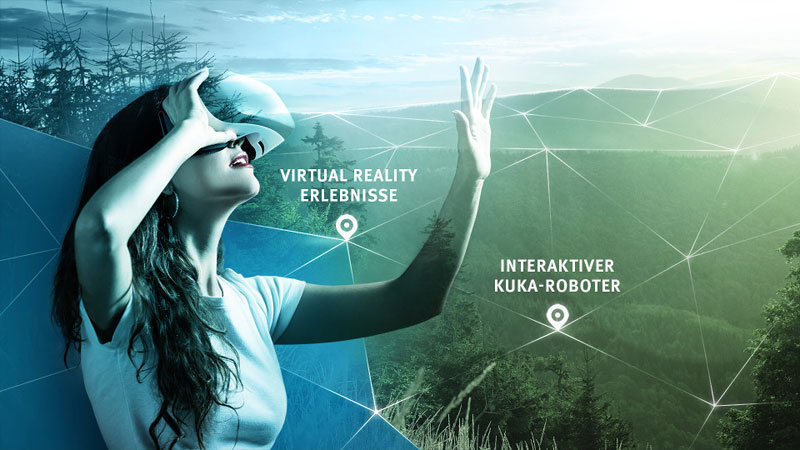Visit the state capital Erfurt and go on a virtual discovery tour through Thuringia.
Baroque Bach in abstract
Bachhaus Eisenach
The couple at the next table is rather excited. The few tables in the museum café are so close together that we can’t help noticing that. Both of them turn out to be Bach devotees who are, of course, also familiar with the other places where he lived and worked (Leipzig, Weimar, Arnstadt, etc.). However, “the Bachhaus in Eisenach is our number one location” because it is one of the oldest and largest museums dedicated to this composer, who is widely regarded as the best in the history of music. The reason for their excitement is that this is their fourteenth visit here over the decades. We look at them questioningly. “Fourteen! The Bach number!”
That’s right! B is the second letter of the alphabet, A is the first and so on. In short: B+A+C+H = 14. Also, the “The Art of Fugue” contains fourteen “Contrapuncti”, or main fugues, and Bach was the fourteenth member to join the “Correspondierende Societät der musicalischen Wissenschaften” (the Corresponding Society of the Musical Sciences). Fourteen buttons adorn Bach’s waistcoat on Haussmann’s 1746 painting, the only genuine portrait of the composer. There have even been special exhibitions and books dedicated to Bach and the number fourteen. At the museum, award-winning animated films tell visitors more about the numerology, as well as other subjects such as “The Well-Tempered Clavier”. Guess how many screens are showing are showing the three-minute films on the first floor...
Sounds as colours
Some in marble, some in wood: there are six busts of Bach in the foyer – some are what you would expect, and some are more unusual. The latter most definitely applies to the huge Bach Playmobil character or figurative paintings by the contemporary artist Johannes Heisig. Jörg Hansen, the director of the Bachhaus since 2006, says: “Over the centuries, our image of Bach has absorbed numerous non-musical, even ideological expectations – ‘the Old Master’, for example, or ‘the German’, or ‘the Revolutionary’ – and the art reflects these expectations, even where it appears to run counter to them.”
It is important to the director to dust off Bach and look at him in a different way. The museum, and in any case the director himself, makes this clear. For example when Hansen raves about the “Goldberg Variations 30+2” by Benjamin Samuel Koren. The work of LED art looks like a mix of colourful bar codes. “Koren used a method suggested by Benjamin Newton to ‘translate’ Bach’s famous Variations line by line into spectral colours, thus making the basic harmony visible.” The result: thousands of colourful tiles, lots of green and red, blue at the edges, a golden axis in the middle. “The clear colours indicate harmonies,” explains Hansen. “Applying this method to Beethoven creates a much darker result.” Sounds as colours, Baroque Bach in abstract: “dusting off mission” accomplished.
Spinet music at hourly intervals
Hansen suggests that anyone visiting the Bachhaus for the first time should follow the classic route: entering the half-timbered house, which dates back to 1456, at the other end of the foyer, where photographs and information boards tell visitors about the house’s history, Johann Sebastian Bach’s life and the Bachs as a family of musicians. On display are period furniture and furnishings, as well as around 400 historic musical instruments. Five of these – organs, a harpsichord, a spinet and Bach's favourite instrument, a clavichord – can be heard at hourly intervals in a 20-minute concert, a unique experience not to be had anywhere else in Germany. Visitors have to, or rather are permitted to, become actively involved by working the pedal for the organ’s air supply because no air equals no sound.
A feast for ears in a hanging chair
After that, the route leads first through the Baroque garden, then up and down the various staircases of the warren-like house. Past the “composing chamber” and the reconstruction of Bach's theological library, designed to look like a treasury, and on into the new building. Away from half-timbered darkness, into a modern and light environment. High rooms, a lot of glass, an open hall with alcoves and interactive stations, where you can watch the fourteen explanatory films. Yet the new limestone panel-clad building that opened in 2007 blends in with the old building so sensitively that you will silently applaud this successful fusion. Which is precisely what various juries have done, but in their case publicly in the form of awards. “We wanted a completely contemporary building,” says Hansen, “the kind of building where the focus is on the music and the aim is to provide a comprehensive experience rather just to present an exhibition.”
For example, Bach’s autograph is explained musically at a listening station, and the “walk-in musical instrument” acts as a 180-degree standing cinema that shows four films. Behind it hang bubble chairs where visitors can listen to Bach’s music via headphones. They can also use an iPod for this. One playlist features 42 arrangements of “Ave Maria” by artists ranging from Maria Callas to the pop icon Madonna, and even a karaoke version. There isn’t a form of music that hasn’t been inspired by Bach. Take jazz, for example. Visitors can listen to Benny Goodman’s interpretation of “Bach Goes to Town” and see his clarinet as well as the sheet music for this swing version.
Bach on film!
In 1940, Disney’s “Fantasia” marked the first visual expression of music made by Bach. It is not only the couple we met earlier who are mesmerised by the screen and this abstract example of cinematic art. Some of the attempts to depict Bach and make him tangible across all those centuries are also quite abstract, as proven by various paintings on the hall. A macabre highlight is the excavation of his remains. Incidentally, Bach was the first person whose skull was used to reconstruct his head. This is also exhibited here, together with a modern reconstruction.
People are therefore continuing to work on Bach’s image, and also on deciphering all the puzzles. The Bach cup, for example, is full of these, including the dot-shaped bulges inside the double monogram JSB. How many are there? Fourteen, of course!
Live music in the Bachhaus
Header Picture: ©Gregor Lengler, Thüringer Tourismus GmbH
Accessibility
Did you like this story?
You might also be interested in ...














